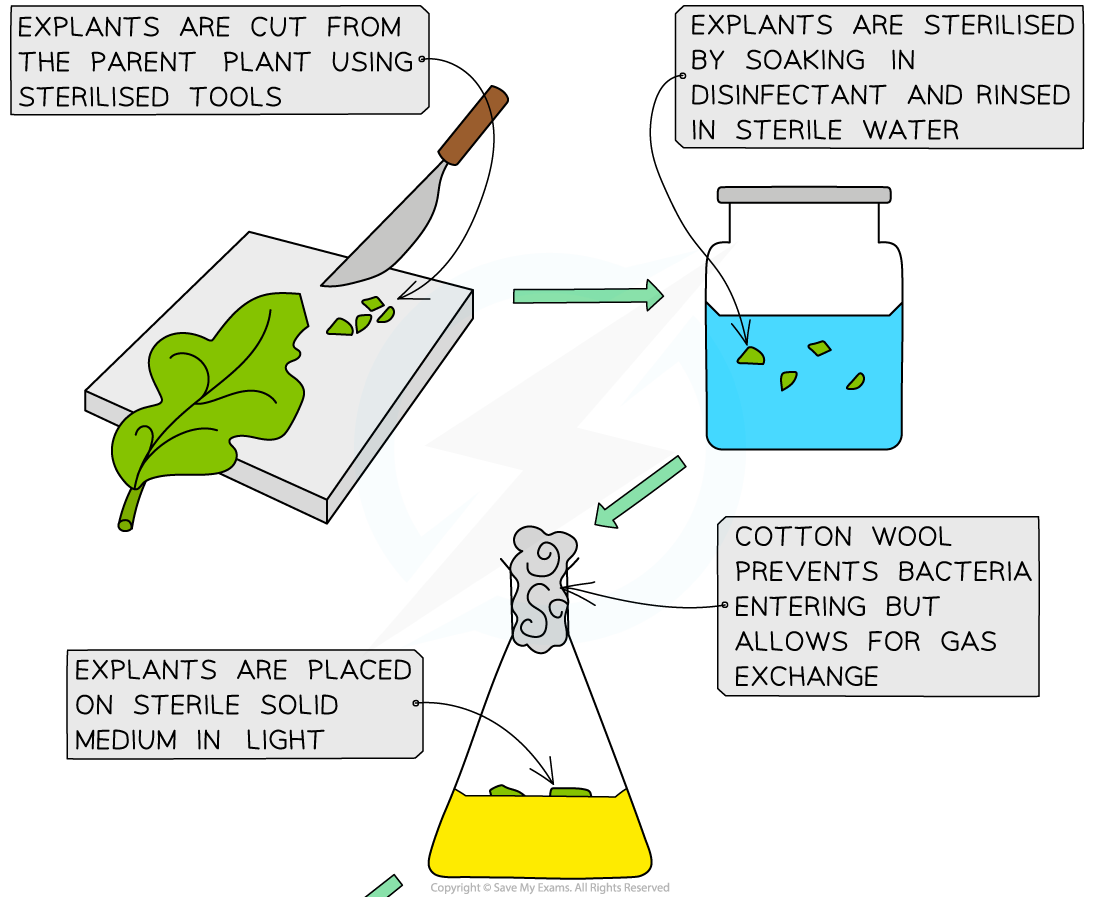- 翰林提供学术活动、国际课程、科研项目一站式留学背景提升服务!
- 400 888 0080
Edexcel IGCSE Biology 复习笔记 5.4.1 Micropropagation
Edexcel IGCSE Biology 复习笔记 5.4.1 Micropropagation
Micropropagation
- Tissue culture is a process in which very small ('micro') pieces of plants (‘tissue’) are grown (‘cultured’) using nutrient media
- Because they are initially grown in petri dishes on nutrient agar we say they are grown ‘in vitro’ – outside a living organism
- How to micro propagate plants in vitro:
- Cells are scraped from the parent plant (these cells are known as explants)
- The surface of the explants are sterilised using a disinfectant followed by a rinse with sterile water
- Sterilised explants are transferred to a sterile petri dish containing sterile nutrient agar
- The growth medium encourages the explant cells to grow and divide into small masses of cells (known as a callus)
- Each callus is transferred to a fresh growth medium that contains a range of plant growth regulators (hormones). The presence of these hormones causes the callus to develop roots, stems and leaves, forming a plantlet
- Plantlets can be transferred to individual potting trays and develop into plants


The steps of micropropagation
Advantages of micropropagation
- Clones are genetically identical individuals
- The cloning of plants has many important commercial uses
- It allows a variety of a plant with desirable characteristics to be produced:
- Cheaply
- With a greater yield (a large number of plants can be produced per square metre)
- Quickly (the plantlets are ready to grow into mature plants)
- At any time of the year
- Identical to each other (so they retain the desired characteristic)
- Disease-free or resistant plants can be bred
- It can also ensure diseases prevalent in other areas of the world are not imported and spread by ensuring native varieties of plants are produced in large enough quantities to supply demand in one country without importing plants from abroad
- Tissue culture can also be an important process in preserving rare plant species
Disadvantages of micropropagation
- There are a number of drawbacks to using micropropagation:
- Trained personnel and a sterile laboratory are required
- All the plants produced are genetically identical and so will all be vulnerable to the same diseases and pests (the lack of genetic variation makes them less able to adapt to environmental change)
转载自savemyexam

早鸟钜惠!翰林2025暑期班课上线

最新发布
© 2025. All Rights Reserved. 沪ICP备2023009024号-1








